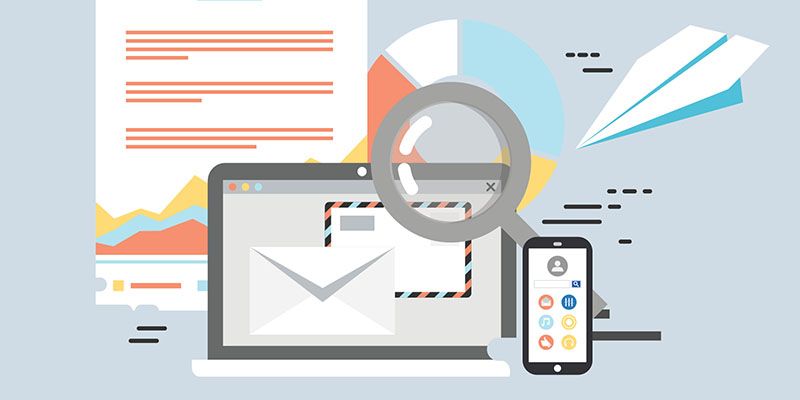Scraping emails from a website is easier than you would think.
However, that does not mean that setting up an email scraping project is simple. In fact, there are many factors you need to consider before getting started on your project.
There are quality, legal and software considerations you’ll need to iron out in order to scrape and use email addresses in a safe and effective way.
Let’s break all of these down.
Source of Emails
First, you’ll have to review the source of your emails very closely.
You will mostly want to assess the quality of the emails you will be scraping. Here are a few things to look for:
- How recent are the email addresses you’re scraping? The more recent, the better
- Were these addresses published with the consent of the specific users? This would mean the people who published their addresses want to receive cold emails.
- How popular is the source of emails you’re scraping? The more popular, the more likely it is that other people are also scraping and emailing these addresses.
- How targeted is your source of emails? Consider if the list of emails you’re scraping is just made up of random addresses or a more targeted group of people from a specific industry or demographic. Think of what specific group of users you’re looking to target.
In short, you’ll want to make sure that the source of emails you will scrape is legitimate and composed of high-quality emails.
Define Your Objective
Next, you will need to clearly define your objective with these emails. In other words, how will you use the list you have just scraped to reach out to these users?
There are several ways you can go about this. The most obvious alternative would be to blast all the addresses with the same email at the same time. However, this option usually results in the poorest results, with low open rates and click rates.
Other options include personally emailing specific addresses in your list to build more organic relationships and potentially schedule 1-on-1s via phone or in-person. While this option will result in higher open rates and click rates, it also requires much more time and effort to pull off correctly.
You could also use this list to create a custom target audience on an ad platform such as Google Ads, Facebook Ads or LinkedIn Ads. These custom audiences usually have better engagement rates in these platforms when compared to regular targetting.
Furthermore, some of these platforms allow you to create “similar audiences” based on the email list you have provided.
There are many other objectives you might have regarding the email list you’re collecting. You could even be thinking about selling it to another business.
No matter what your objective is, you will have to clearly define it in order to structure your project accordingly.
Local Spam Laws

Now that you know how you will be using the email list you will scrape, it is time to consider local laws related to your objectives.
The truth is that we are not lawyers. However, we recommend that you look into some of these resources before you move forward.
GDPR
The EU’s General Data Protection Regulation protects the data and privacy of most European citizens in several ways. Even if you’re not located in the EU, you will have to consider GDPR regulations when scraping emails of European users.
You can start by reading some of the GDPR Key Changes.
CASL
Canada is another territory with specific laws regarding email spam. Canada’s Anti-Spam Legislation protects all Canadian citizens from receiving spam messages from any other user or business. While this law does not necessarily target user’s privacy, it does deal with how their data is used to communicate with them.
You can read more about CASL on the Government of Canada’s website.
CAN-SPAM
The US also has its own spam-related regulations. CAN-SPAM is, in our opinion, much more lax about the issue and does not target some key points over spam and user’s privacy. However, it still targets issues regarding email communications and your business is expected to comply with CAN-SPAM as per the FTC.
Here is the FTC’s Compliance Guide for the CAN-SPAM act.
Bounce Rates and Spam
If you plan on emailing an entire list of scraped emails, you will have to be very careful when monitoring your spam scores and bounce rates.
If your emails are frequently caught as spam or have high bounce rates, you might have to deal with numerous consequences.
At their softest, these might include getting banned by your email marketing providers such as Mailchimp or Constant Contact.
At their worst, email providers such as Gmail, Outlook, and Yahoo might permanently categorize your domain or IP as a spam sender.
In this case, any email sent from your IP or domain might instantly be blocked or sent to the user’s spam folder. This could have an incredibly negative impact on your email marketing efforts and day-to-day operations.
Choosing the Right Tool to Scrape Emails
Now that you have figured some of these considerations, it’s time to move on to the last step of the process: choosing the best web scraper for your email scraping project.
First, you’ll have to determine the needs of your project and what web scraping features you’ll need from the software you choose.
We recommend using ParseHub, a free and powerful web scraper that can extract data from any website. Furthermore, if you ever get stuck during your web scraping project, we are happy to help with any issues via email at hello(at)parsehub.com or live chat (through our homepage).
Closing Thoughts
Email scraping can provide you with a lot of power, and as they say, with great power comes great responsibility.
After reading through this guide, you should be ready to start your web scraping project and collecting emails.
In fact, we’ve written an in-depth guide on how to scrape emails from any website.
Happy scraping!

